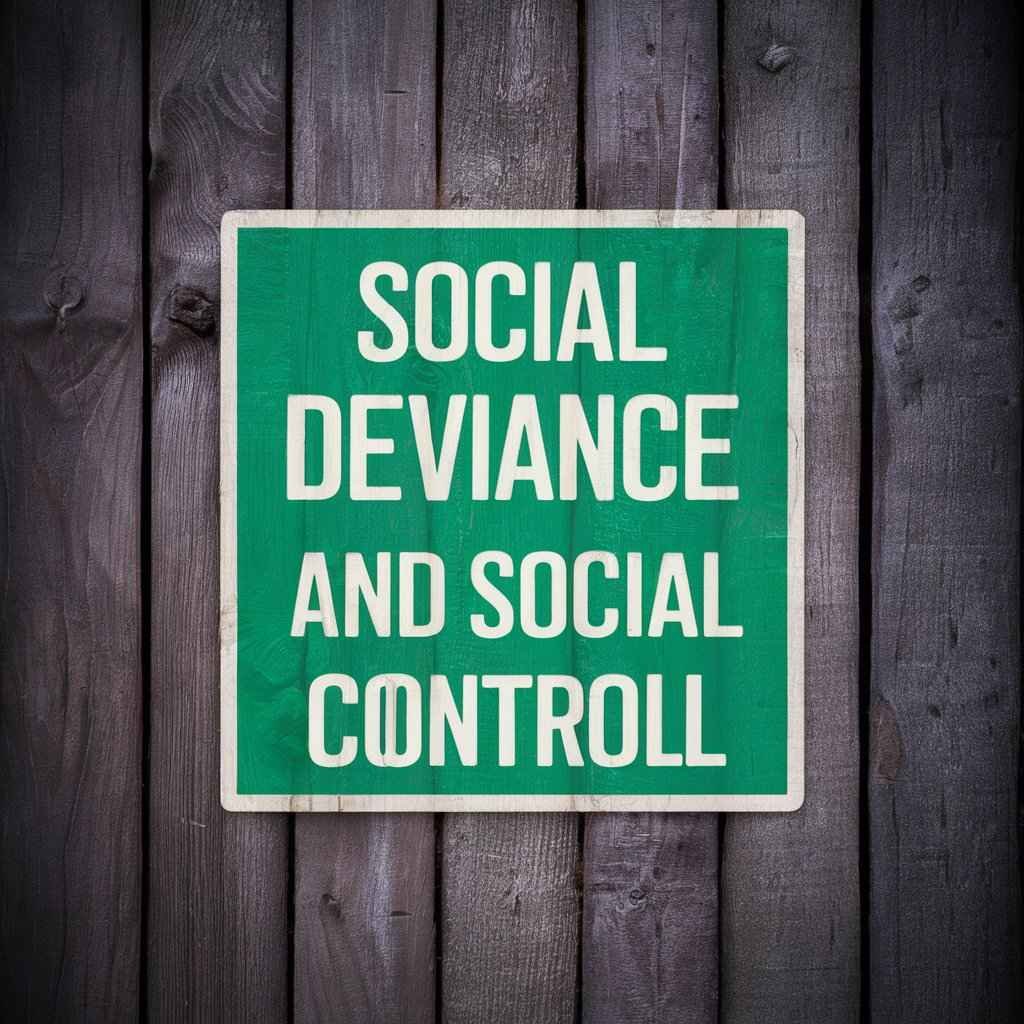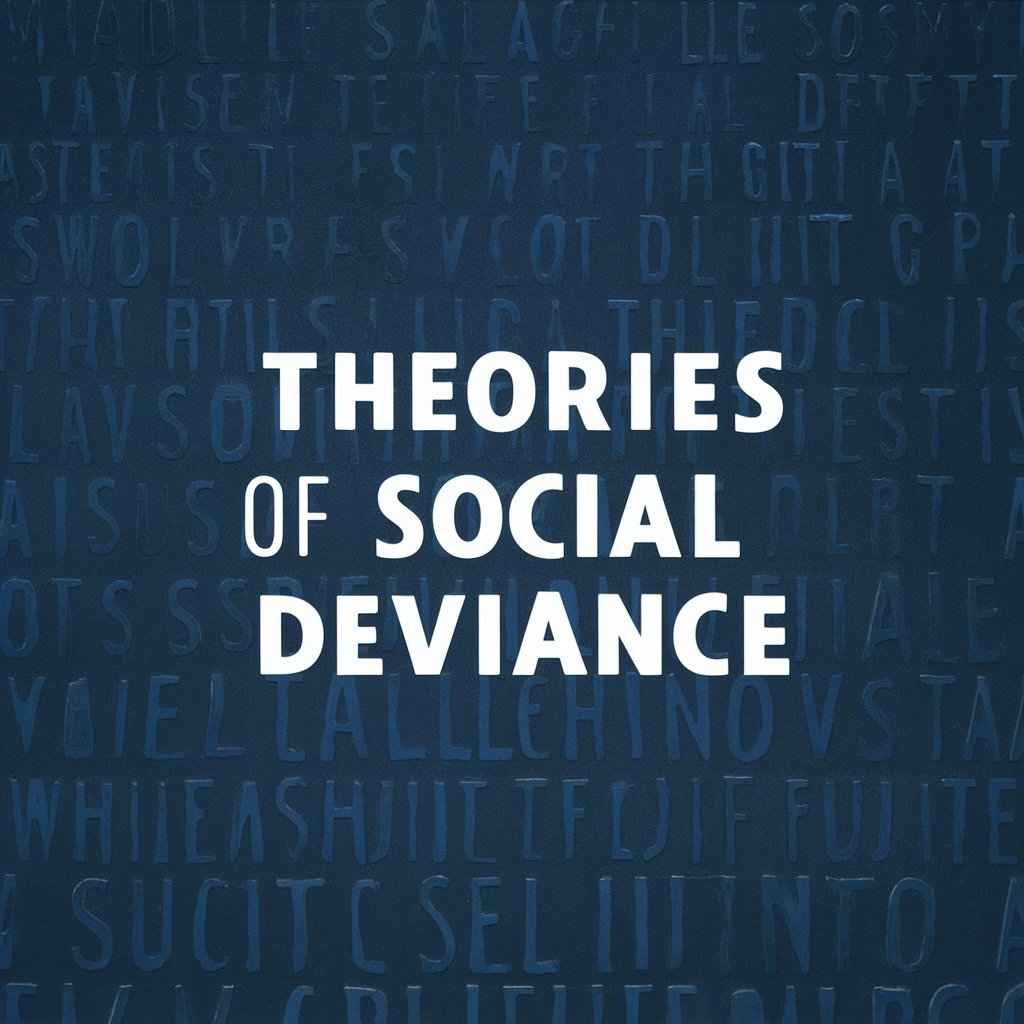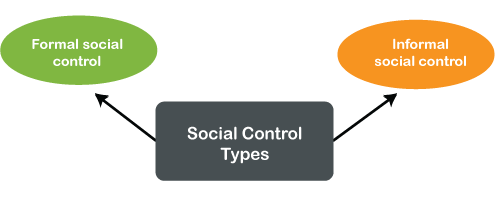Social deviance and social control are crucial concepts in understanding how societies maintain order and address behaviors that violate norms. A behavior, belief, or circumstance that deviates from accepted social norms can be classified as social deviance and can range from small infractions to major crimes. Social control refers to the systems and tactics that communities employ to control conduct, uphold law and norm, and ensure that people follow the rules. While social control can take the form of formal (laws, regulations) or informal (social norms, peer pressure), there are four types of deviance: positive, negative, formal, and informal.
A complex interplay between individual behavior and societal regulation is highlighted by a number of theories that explain deviance and control, including structural functionalism, strain theory, labeling theory, social control theory, differential association theory, and conflict theory.
Table of Contents
Meaning of Social Deviance and Social Control

A behavior, belief, or circumstance that deviates from accepted social norms and expectations is referred to as social deviance. Deviance can include anything from small transgressions, like breaking the dress code, to serious crimes. It depends on the context and changes with time and culture; after all, what is deemed abnormal in one community may not be in another.
The institutions, techniques, and systems that societies employ to govern social order and individual behavior are referred to as social control. Its goals are to guarantee adherence to laws and conventions, curb deviation, and foster stability.
Types of Social Deviance
Social deviance encompasses a wide array of behaviors that diverge from societal norms and expectations. Understanding its various types is crucial in analyzing the complexity of social dynamics. Broadly, social deviance can be categorized into primary and secondary deviance, each with distinctive characteristics and implications.
Primary deviance: It is the term used to describe early rule-breaking behaviors that do not lead to the development of a deviant identity. Since these transgressions are typically small, society may overlook them or tolerate them. Examples of primary deviance include minor shoplifting incidents or drug experimentation during adolescence. The most important thing to remember about primary deviance is that it usually has no effect on how people view themselves or how they are perceived by others.
Secondary deviance: When someone breaks the law and receives negative feedback from society, this can result in secondary deviance and the development of a deviant identity. The hallmark of this kind of deviance is when the offender internalizes the label of deviant and carries on with the deviant behavior as a result. For instance, someone who has stolen and is constantly called a thief by society may come to identify with this identity and engage in more crimes as a result. The importance of societal response in the continuation of deviant behavior is highlighted by secondary deviance.
Criminal and Non-criminal deviance: Social deviance can be further divided into criminal and non-criminal categories in addition to primary and secondary deviance. Criminal deviance includes any behavior that is against the law, including drug trafficking, assault, and robbery. Usually, these actions result in social disapproval and legal repercussions. However, non-criminal deviance encompasses behaviors that do not violate the law but nevertheless go against social norms, like extreme body modifications or out-of-the-ordinary fashion choices. While it may not be as acceptable, non-criminal deviance does not have the same legal consequences as criminal deviance.
Positive and negative deviance: They are two more key categories to distinguish. When someone overconforms to social norms in a way that is seen as admirable or advantageous, that behavior is called positive deviance. Positive deviance can encompass, for example, extraordinary altruism or the development of novel solutions. Contrarily, negative deviance comprises underconforming or going against the norm in a way that is harmful or undesired, like abusing drugs or playing violent games. These types of deviation show the range of abnormal conduct and their various effects on society.
Theories of Social Deviance

Sociological theories provide a framework for understanding the occurrence of social deviance, offering explanations for why individuals engage in behaviors that deviate from societal norms. Among the most prominent theories are Structural Strain Theory, Labeling Theory, Differential Association Theory, and Control Theory. Each theory presents unique perspectives on the development and persistence of deviant behavior.
1. Structural Functionalism:
- Believes that deviation is a vital component of social organization.
- Emile Durkheim is a pivotal theorist.
- It serves to promote social change, unite groups, and clarify norms.
2. Strain Theory:
- Argues that deviation occurs when societal objectives are not met by the resources at hand.
- Robert K. Merton is a pivotal figure.
- Response styles include innovation, ritualism, retreatism, cooperation, and rebellion.
3. Labeling Theory:
- Claims that labels from society are the cause of deviance.
- Edwin Lemert and Howard Becker are important theorists.
- Primary deviance contrasted with secondary deviance: original behavior contrasted with later behavior brought on by social reaction.
4. Social Control Theory:
- Examines the reasons why people follow norms instead of going against them.
- A pivotal thinker is Travis Hirschi.
- Commitment, involvement, belief, and attachment are the elements.
5. Differential Association Theory:
- Asserts that interactions with other people teach deviance.
- Edwin Sutherland is a major theorist.
- Highlights the impact of social environments and peer groups.
6. Conflict Theory:
- Believes that social injustice and power imbalances are the cause of deviance.
- Quinney and Karl Marx are important theorists.
- Focuses on the ways in which laws and customs serve the interests of the powerful.
Types of Social Control

1. Formal Social Control:
- Carried out by authorised representatives like the police, courts, and regulatory bodies.
- Laws, rules, and official sanctions are a few examples.
2. Informal Social Control:
- Enforced by cultural norms and social interactions.
- Peer pressure, family expectations, and social disapproval are a few examples.
Mechanisms of Social Control
The term “social control” describes the range of tools and techniques used by communities to impose norms and keep outlaw behavior. The two main categories of these mechanisms are formal and informal. Legislation, rules, and the function of law enforcement are examples of formal social control mechanisms. Establishing regulations and enforcing penalties for rule violations are the means by which these entities are supposed to uphold order. When it comes to controlling deviance, legal frameworks offer an organized method that guarantees actions that deviate from social norms have explicit repercussions.
On the other hand, informal social control mechanisms are equally important despite being less formalized. Peer pressure, community norms, and socialization are some of these mechanisms. Socialization, the early-life process through which people pick up and assimilate the norms and values of their community, is essential for promoting conformity. Peer pressure is also important because people often change how they behave to fit in with their social group’s norms in an effort to fit in and prevent being shunned. Community norms serve as an additional safeguard against deviation by enforcing unwritten rules that govern behavior within a specific group.
Institutions that support social control and reduce deviant behavior include the family, the media, education, and religion. The family is frequently the first place where children learn fundamental norms and values. Through the reinforcement of social norms and the instillation of discipline, educational institutions carry on this process. Religion can provide moral precepts that influence behavior and encourage conformity to a code of ethics. The media’s wide dissemination of societal norms and values subtly shapes public perceptions of what behavior is acceptable and unacceptable.
Social control and social deviance, which influence both individual behavior and the stability of society, are essential components of social life. Deviance draws attention to the limits of appropriate behavior, while social control systems uphold conformity and order. Gaining knowledge about the various forms, theories, and methods of social control and social deviance can help one better understand the intricate dynamics of social regulation and the ongoing negotiation of social norms.
Frequently Asked Question(FAQ)
What is social deviance?
Behaviors, attitudes, or circumstances that go against society norms and expectations are referred to as social deviance. Anything from small rule violations to serious crimes can fall under this category.
What is social control?
The institutions, techniques, and controls that societies employ to govern social order and personal conduct are collectively referred to as social control. Legislation and unofficial measures like social norms are included.
Related Articles

